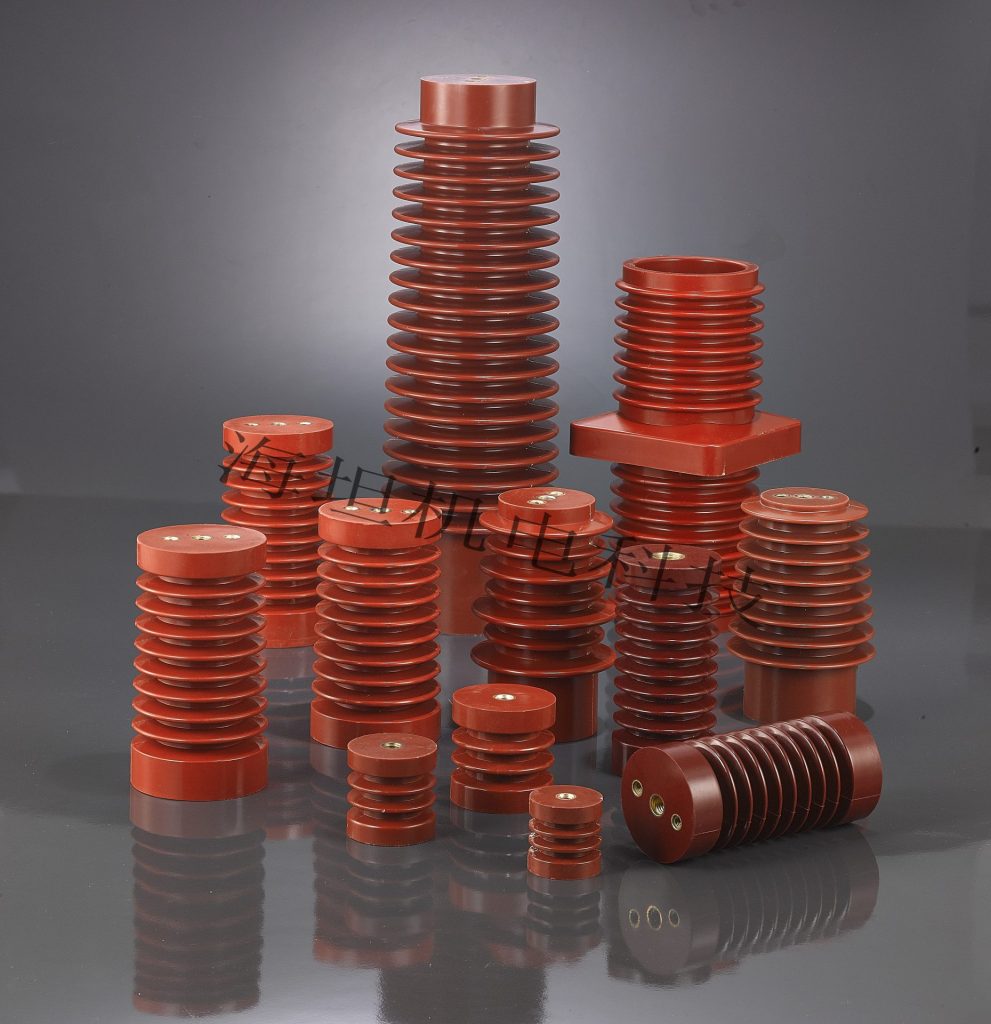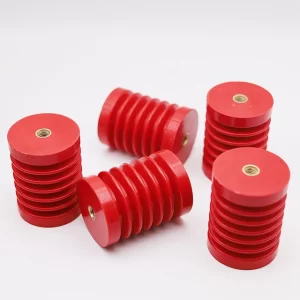Epoxy Insulators: Types, Features & Benefits
What is an Epoxy Insulator?
If you’ve ever worked with electrical systems, you know that insulation is everything. And that’s where epoxy insulators come into play. These insulators are made from epoxy resin, a robust and lightweight material that excels in both electrical insulation and mechanical durability.
Unlike traditional porcelain insulators, epoxy insulators offer superior performance in high-voltage applications, making them a preferred choice in modern power distribution systems.
Evolution of Epoxy Insulators
Epoxy insulators have come a long way. Initially, power grids relied heavily on porcelain insulators, which, while effective, had significant downsides—heavier weight, fragility, and costly replacements.
With advancements in polymer science, epoxy emerged as a game-changer. The latest cycloaliphatic epoxy insulators now boast exceptional resistance to weather, UV radiation, and pollution, making them ideal for both indoor and outdoor use. In fact, research from IEEE highlights epoxy’s outstanding dielectric strength, further cementing its role in modern power grids.
Key Features of Epoxy Insulators
So, what makes epoxy insulators a standout choice? Let’s break it down:
1. Excellent Electrical Insulation
Offers high dielectric strength, reducing the risk of electrical breakdown.
Performs well in high-voltage applications.
2. High Mechanical Strength
Stronger than porcelain—up to 18x the flexural strength.
Resistant to cracks, chipping, and impact damage.
3. Weather & Chemical Resistance
Withstands UV radiation, extreme temperatures, and heavy pollution.
Ideal for offshore substations, industrial sites, and harsh environments.
4. Lightweight & Compact Design
70% lighter than porcelain, making installation faster and easier.
More compact, allowing for space-saving designs.
How Do Epoxy Insulators Work?
While appearing deceptively simple, epoxy insulators perform extraordinary feats in electrical systems. Let’s explore their sophisticated operational mechanics:
1.Electromagnetic Fortification
Epoxy resin creates an impenetrable dielectric barrier through its cross-linked molecular structure. This nanocomposite matrix:
- Suppresses electron migration with a dielectric constant 30% lower than porcelain
- Prevents arc formation even at 150kV/cm field strengths
- Eliminates surface tracking through homogeneous charge distribution
2.Structural Mastery
These unsung heroes demonstrate remarkable mechanical prowess:
- Withstands 250MPa compressive loads – equivalent to supporting 25 metric tons
- Maintains structural integrity under 15kN tensile stress (2× ceramic capacity)
- Absorbs vibration energy through viscoelastic damping properties
3.Environmental Defense Systems
Engineered for battlefield-like conditions:
- Hydrophobic surface achieves >100° contact angle (water beads like mercury)
- UV-stabilized formulations retain 95% dielectric strength after 10,000 hrs exposure
- Operational range spans -40°C to 130°C with <0.5% thermal expansion
4.Precision-Engineered Adaptability
Leveraging liquid-to-solid transformation:
- Custom molds create optimized geometries for field stress control
- Filler-loaded variants (e.g., silica-reinforced) achieve 350kV BIL ratings
- Gradient dielectric compositions manage non-uniform fields
5.Critical Infrastructure Guardianship
Proven superiority in extreme scenarios:
→ Industrial zones: Pollution flashover resistance exceeds IEC 60815 Class IV
→ Coastal installations: Salt-fog withstand >1000hrs per ASTM B117
→ Ultra-HV applications: Partial discharge <5pC at 1.5Ur
For empirical performance data and accelerated aging test results, refer to IEEE Standard 1523-2017 on polymer insulator applications..
Types of Epoxy Insulators
Different electrical setups require different insulators. Here’s a look at the most common types:
1.Busbar Support Insulator
Used in switchgear and distribution panels, these insulators support and isolate busbars, ensuring safe electrical conduction.
2.Epoxy Block Insulator
Typically found in high-voltage substations, these compact yet robust insulators prevent short circuits.
3.Bushing Insulator
Designed for transformers and circuit breakers, these insulators ensure proper electrical separation between components.
4.Epoxy Post Insulators
Commonly used in transmission lines, these insulators support high-voltage conductors while preventing leakage currents.
5.Resin Cast Support Insulator
Ideal for medium to high-voltage applications, resin-cast insulators offer customisable shapes and high mechanical resistance.
Benefits of Epoxy Insulators
Switching to epoxy insulators comes with a host of advantages:
1.Durability & Longevity
Resistant to cracks, moisture, and UV exposure.
Lifespan of 30+ years, reducing maintenance costs.
2.Cost-Effective Performance
Lower failure rates mean fewer replacements and reduced downtime.
Easier installation translates to lower labour costs.
3.Enhanced Electrical Safety
Non-tracking, non-weathering properties ensure stable performance in extreme conditions.
Minimal risk of electrical flashovers.
4.Lightweight & Easy Installation
70% lighter than porcelain, allowing for quick and safe installation.
No need for complex lifting equipment, reducing setup time.
Is Epoxy Insulator Better Than Porcelain Insulator?
| Feature | Porcelain Insulator | Epoxy Insulator |
| Weight | Heavy | 70% lighter |
| Strength | Brittle, prone to cracks | 18x stronger |
| Weather Resistance | Moderate | Excellent |
| Installation Ease | Requires heavy lifting | Quick & simple |
| Maintenance | High | Minimal upkeep |
| Cost Over 5 Years | Higher due to breakage | Lower & durable |
As seen above, epoxy insulators outperform porcelain in almost every category, making them the smart choice for modern power grids.
Conclusion
Epoxy insulators are the future of electrical insulation. With high strength, superior insulation, and cost-effective performance, they have rightfully replaced porcelain in many critical applications.
If you’re looking for durable, lightweight, and high-performance insulators, epoxy is the way to go. As power grids continue to evolve, investing in the right insulation materials ensures reliability, safety, and long-term savings.
For further technical insights, check out this IEEE study on high-voltage epoxy insulators.
--- END ---
© Copyright 2024 China Haitan Electromechanical Technology Co., Ltd. All rights reserved.SUPPORT BY:JUNJ Privacy Policy


 E-mail:
E-mail:  No. 20 Lingyun Road, Dongfeng
No. 20 Lingyun Road, Dongfeng 
